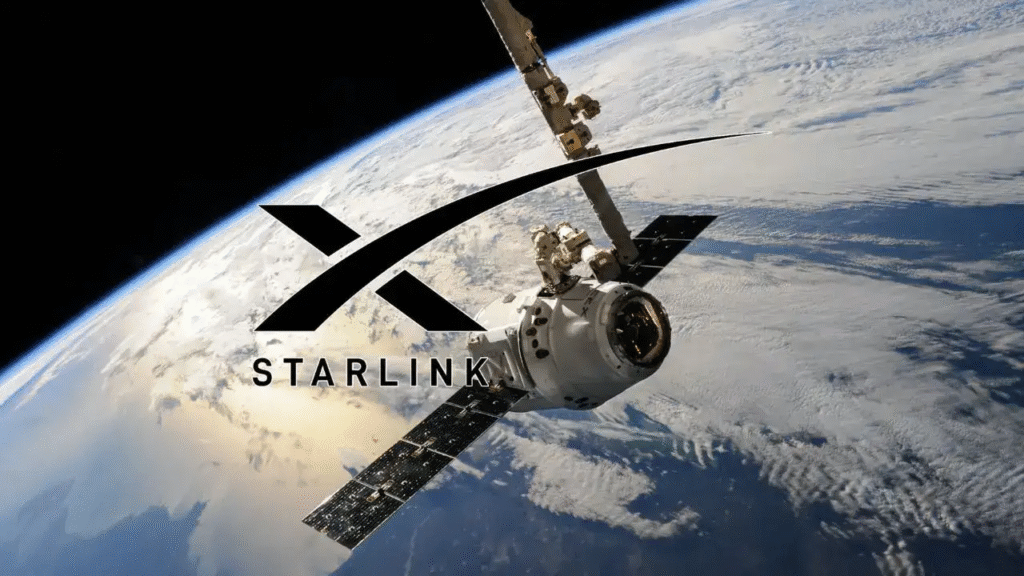
Image Source – TimesNow
Elon Musk’s Starlink, the satellite internet service run by SpaceX, is gearing up for a much-anticipated debut in India. Reports suggest it could roll out as early as August 2025. People are buzzing about its potential to connect India’s far-flung regions, yet there’s a catch—pricing, competition, and security issues could make or break its success in this cost-conscious market. Let’s dive into what this launch means, how it’s unfolding, and what folks are saying.
How Starlink Works: Satellite Internet Technology
At its heart, Starlink relies on a network of low Earth orbit (LEO) satellites to beam high-speed internet across the globe. Unlike those old-school geostationary satellites, these LEO ones zip closer to Earth, cutting down delays—perfect for video calls or gaming. By June 2025, it’s already hooked up millions in over 100 countries, delivering speeds up to 220 Mbps with latency as low as 25 ms. What’s special? It doesn’t need cables or towers, a big deal for places left behind by traditional broadband.
Starlink in India: Navigating Regulatory Challenges
Starlink’s journey to India hasn’t been a walk in the park. Since applying in 2022, it’s faced tough questions from the government about security and spectrum. Progress came, though—in May 2025, the Department of Telecommunications handed over a Letter of Intent, a green light to push for compliance. By June, a key telecom license was in hand, setting the stage for business. Still, clearance from the Indian National Space Promotion and Authorisation Centre looms, along with spectrum decisions. Meanwhile, new rules for satellite operators demand strict adherence to security measures, like content monitoring and traffic interception.
Starlink India Launch Date and Partnerships
Word is, Starlink could go live in India within two months—think August 2025. That’s faster than earlier assumption of six to nine months, likely thanks to recent regulatory wins. To make it happen, Starlink’s teamed up with big players. Bharti Airtel sealed a deal with SpaceX in March 2025 to push Starlink gear through its stores, targeting businesses, schools, and rural spots. Then there’s Reliance Jio—despite past spectrum spats, they’ve joined forces too, tapping into India’s telecom giants to widen Starlink’s reach.
Starlink India Pricing and Plans
Starlink’s price tag in India starts with a hefty ₹33,000 upfront for the kit—satellite dish and modem included. Monthly fees kick off at ₹3,000 for unlimited high-speed internet, though some say it might climb to ₹4,200. You do get a free one-month trial with the setup, which is a nice touch.
| Aspect | Details |
|---|---|
| Setup Cost | ₹33,000 (includes satellite dish and modem) |
| Monthly Fee | ₹3,000–₹4,200 for unlimited high-speed internet |
| Trial Period | One-month complimentary trial with purchase |
| Expected Speeds | Download: 25–220 Mbps, Upload: 5–20 Mbps, Latency: 25–50 ms |
| Target Areas | Remote villages, rural areas, schools, businesses |
Compared to JioFiber’s ₹399 monthly plans or Airtel’s budget options, it’s steep. Early rumors of ₹840 rates seem off—perhaps these reflect premium tiers or import costs.
Starlink’s Impact on Rural India: Bridging the Digital Divide
Starlink’s got its sights on India’s remote corners, where broadband’s a rare sight. With rural teledensity at just 59.26% in April 2025, there’s a huge gap to fill. Imagine villages getting online education, healthcare, or e-commerce—or reliable connections during floods and outages. Speeds of 25–220 Mbps could shift the game, especially where options are slim. Even snagging 1% of India’s broadband market could mean big bucks for SpaceX.
Competition in India’s Telecom Market: Starlink vs. Local Providers
India’s telecom scene is no joke. Giants like Reliance Jio and Bharti Airtel rule with cheap plans—JioFiber at ₹399—and their 5G wireless services add pressure. Other satellite players, like Bharti-backed Eutelsat OneWeb and Jio’s SES tie-up (Jio SpaceFiber), are already in the mix. OneWeb’s serving businesses via Airtel’s network, so Starlink’s higher rates might nudge it toward premium users—think rural firms or schools—rather than everyone.
Security Concerns and Regulations for Starlink in India
India’s not taking chances—its strict rules stem from tech sovereignty and safety fears. Content censorship and traffic checks are non-negotiable for satellite services. Smuggled Starlink devices popping up in places like Manipur didn’t help, sparking a serious probe. Meeting these demands has been Starlink’s ticket to that telecom license.
Starlink’s Global Success: Lessons for India
Globally, Starlink’s shaken things up—think remote areas, disaster zones, or even Ukraine’s battlefields. It’s thrived in spots like Chile and Norway, proving it can carve out a niche. In India, with 1.4 billion people and 950 million online, even a sliver of the market could pay off big.
The Future of Starlink in India: Opportunities and Challenges
Starlink’s on the cusp of something huge in India—a shot at universal internet, especially for rural reaches. Partnerships with Airtel and Jio, plus recent approvals, give it a solid foothold. But that ₹33,000 setup and ₹3,000 monthly fees? It might keep it out of reach for many unless prices shift. As India weighs innovation against affordability and security, Starlink’s got to play its cards right to turn its tech edge into a connectivity win.
Key Citations
- Starlink to launch services in India within two months
- Starlink India launch with ₹3,000 monthly plans
- Elon Musk’s Starlink launching in India
- Starlink’s launch in India now a matter of when
- Musk’s Starlink gets key India licence
